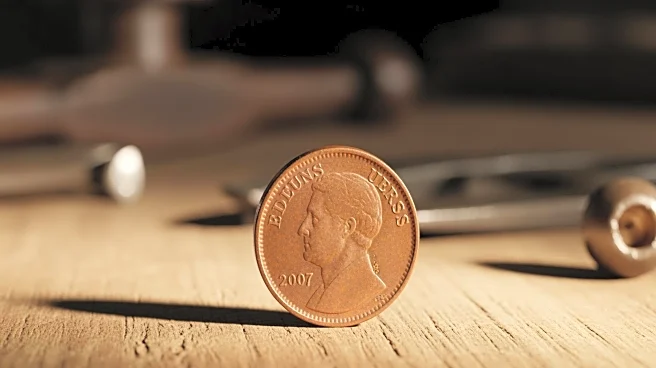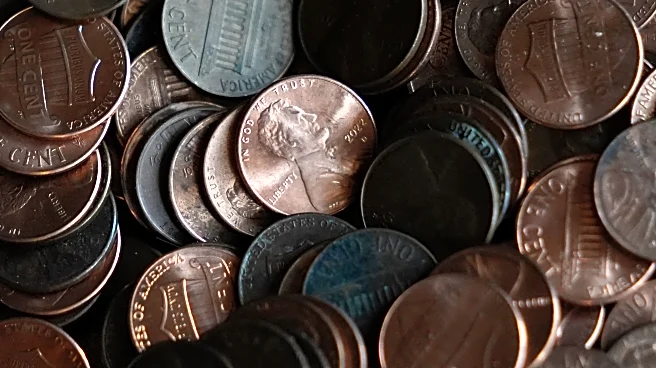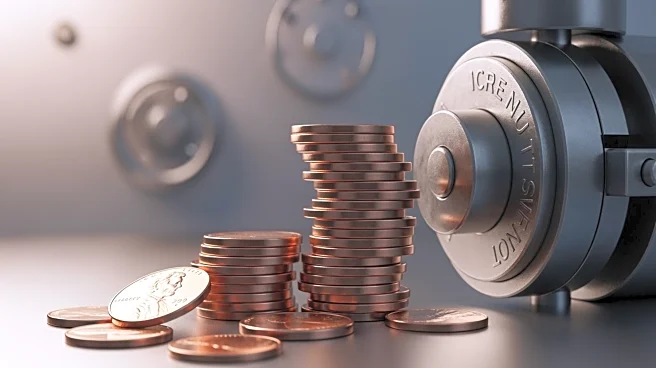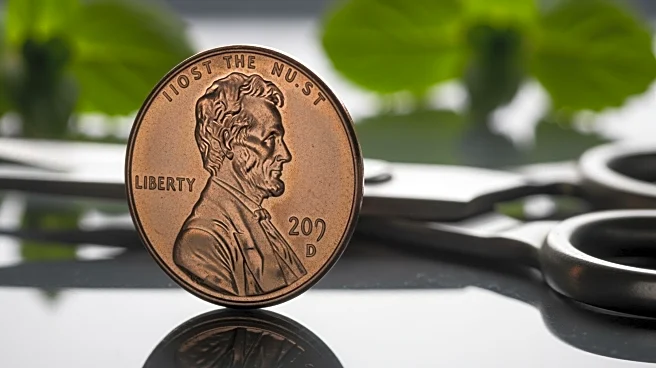What's Happening?
On November 12, 2025, the U.S. Mint in Philadelphia concluded the production of the penny, marking the end of a 232-year tradition. The decision was made due to the rising costs of production, which had
exceeded the coin's face value. The final pennies were struck during a ceremonial event and will not enter general circulation; instead, they will be auctioned off as commemorative items. Despite the cessation of production, approximately 300 billion pennies remain in circulation, valued at $3 billion. Acting Mint Director Kristie McNally emphasized the penny's enduring legacy in American history, noting its continued significance in commerce and culture.
Why It's Important?
The discontinuation of the penny is a significant move by the U.S. Treasury, expected to save $56 million annually. This decision reflects broader economic considerations, as the cost of producing each penny had risen to 3.69 cents, far exceeding its value. The move may influence pricing strategies in retail, where 'charm pricing' often utilizes the penny to make prices appear lower. Additionally, the penny has cultural significance, having inspired fashion trends and been featured in films. The decision may also spark discussions on the future of other low-denomination coins and their role in the economy.
What's Next?
The U.S. Mint plans to auction the final pennies as commemorative items, which could attract collectors and enthusiasts. The cessation of penny production may lead to changes in retail pricing strategies and cash transactions, as businesses adapt to the absence of the one-cent coin. Stakeholders, including retailers and consumers, may need to adjust to rounding practices in cash transactions. The decision could also prompt discussions on the future of other coins and the potential for further cost-saving measures by the U.S. Treasury.
Beyond the Headlines
The end of penny production raises questions about the cultural and historical significance of currency in America. The penny, featuring President Abraham Lincoln since 1909, has been a staple in American life, symbolizing thrift and small savings. Its discontinuation may lead to a reevaluation of the cultural importance of physical currency in an increasingly digital economy. Additionally, the move could influence public sentiment and nostalgia, as evidenced by humorous and reflective reactions on social media.














